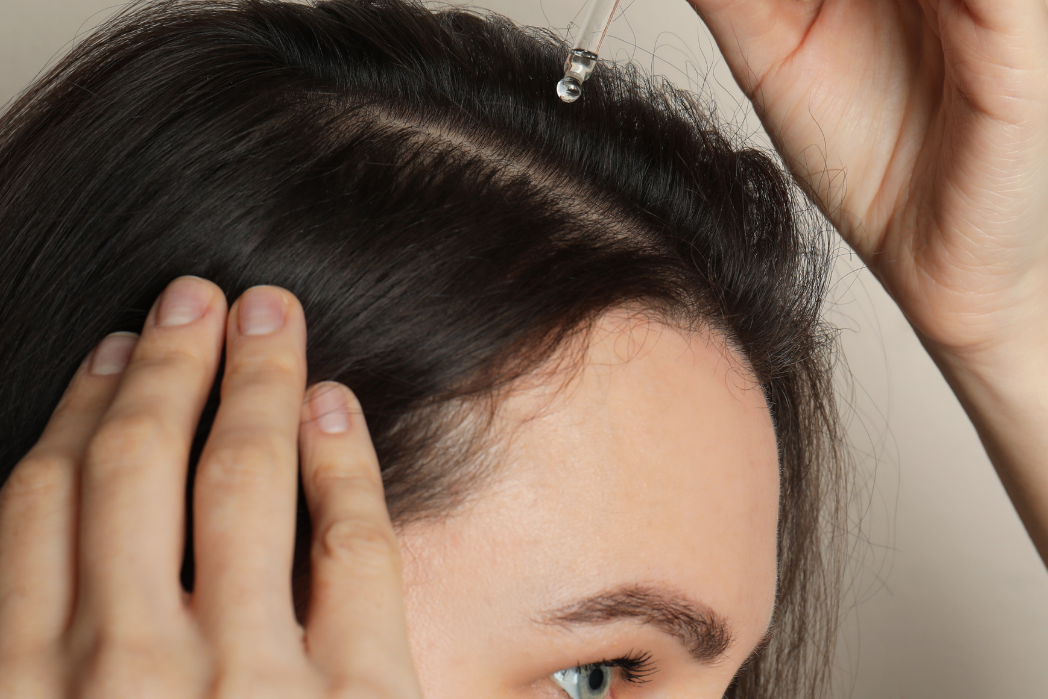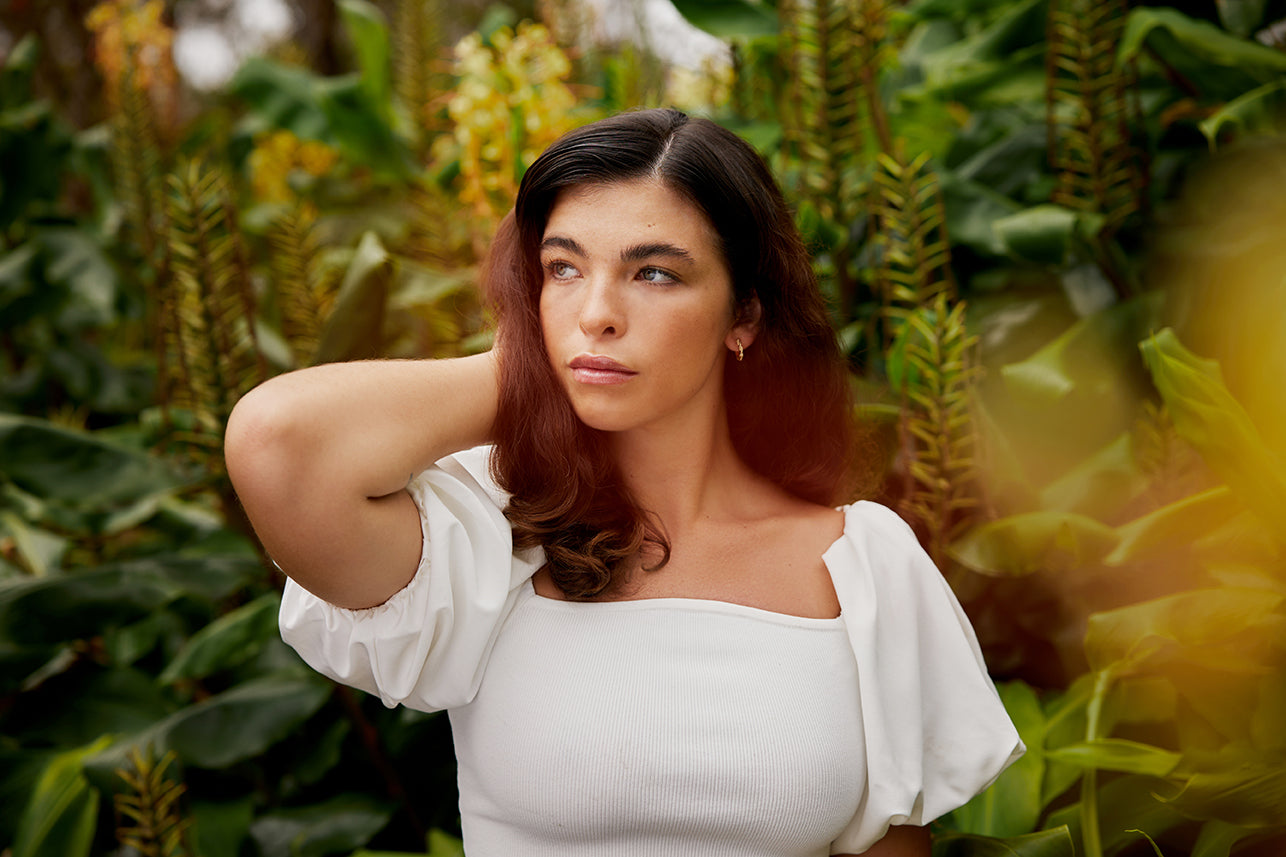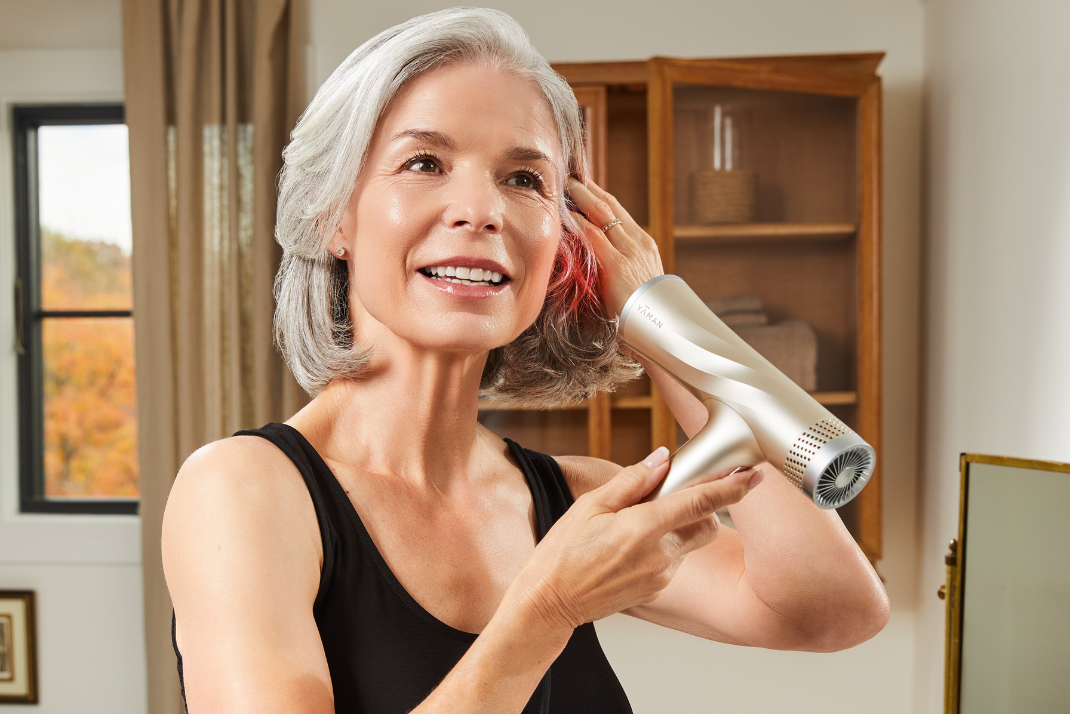From harsh chemical processing and constant heat styling to tight updos and exposure to the daily elements – our hair goes through a lot.
Hair oiling could be one way to give your tresses some much-needed R&R. Perhaps that's the secret behind its centuries-old status as a cherished hair care ritual.
At YA-MAN, we blend cultural hair care traditions with advanced beauty technologies to bring you effective, luxurious hair solutions. Wondering about hair oiling and its benefits for your gorgeous locks?
Join us as we uncover the history, benefits, and top tips for adding this time-tested tradition to your own routine.
Your crash course in hair oiling starts in 3… 2…
What is Hair Oiling?
Hair oiling is the practice of massaging oils into the scalp to enhance moisture, texture, and shine.
This traditional method continues to maintain modern relevance in hair care practices, thanks to the natural benefits it offers every hair type.At its core, hair oiling is about using nature's ingredients like seeds, flowers, and leaves to enhance your strands.
Curious how it all started?

The Tradition of Hair Oiling
Hair oiling practices date back centuries, most notably in Africa and South Asia.
Ancient Egyptians nourished their hair with Almond and Castor oil, Moroccans traditionally used Argan, and South Africans favored Marula oil. In India, both ancient and contemporary practices involve Coconut oil, and Ayurvedic hair oiling uses Sesame oils.
The purpose? Some cultures used oiling for hair strength and scalp health, while others embraced it as part of spiritual and holistic wellness.
In ancient Sanskrit, 'sneha' means both 'to oil' and 'to love' –and that’s no coincidence. These cultural hair care traditions were truly considered an act of love.
For many, memories of hair oiling go back to childhood, when mothers lovingly massaged warm oil into their children’s hair as a cherished bonding ritual.
But what does the hair oiling science say?
The Science Behind Modern-Day Hair Oiling
Today, hair oiling is having a renaissance with the hashtag #hairoiling trending on many social media platforms. Individuals new to the concept are reviving the ancient tradition and finding new ways to adopt it into their hair care routines.
The beauty of this practice is that each oil boasts unique benefits.
For instance, Coconut oil has a special ability to penetrate the hair and reduce protein loss, essential for strong, healthy hair.
Then there are oils like Olive and Sunflower, which coat the surface to create a protective layer over the hair shaft that locks in moisture for smoother and shinier hair.
And yep—there's research to prove it. Studies show that these hair oiling techniques effectively prevent hair damage and improve its health, whether your hair’s already damaged or not.
So, whenever you oil your hair, you're not just following tradition—you're giving your locks a scientifically proven boost in strength and vitality.

The Main Benefits of Hair Oiling
Hair oiling has evolved from a feel-good bonding ritual into a beauty practice that delivers abundant benefits:
- Nourishes your hair
- Stimulates hair growth
- Locks in moisture
- Prevents dandruff
- Controls frizz
- Enhances shine
- Reduces breakage and splits ends
- Naturally conditions the hair
- May offer thermal (heat) protection
- Shields hair from environmental stressors
- Relieves stress and promotes relaxation
Before you can reap these hair-oiling benefits, you’ll need to find the one that's right for you.
Different Types of Hair Oils for Various Needs
Here’s a popular hair oils guide to get you going:
● Dry, brittle hair: Coconut oil
Coconut oil penetrates the hair shaft deeply, boosting moisture and reducing protein loss. It's great for strengthening hair and preventing breakage.● Frizzy, unruly hair: Argan oil
Known as 'liquid gold,' Argan oil is packed with antioxidants and Vitamin E, making it a superb choice for taming frizz, adding shine, and improving hair elasticity.● Dry scalp and dandruff: Olive oil
Supermodel Miranda Kerr’s holy grail is heavy and moisturizing, excellent for deep conditioning and improving scalp health. Its antioxidants also help protect hair from damage.● Oily hair and scalp: Jojoba oil
Jojoba oil's composition closely resembles sebum, the oil your scalp naturally produces. It can help regulate oil production, keeping your scalp balanced.● Hair growth and thickness: Castor oil
Castor oil is high in ricinoleic acid, which helps increase circulation to the scalp and improve hair growth. It’s also effective in hydrating and sealing moisture in the hair.● Fine or thinning hair: Grapeseed oil
Grapeseed oil is lightweight and contains antioxidants that can block the production of DHT, a hormone that causes hair loss.● General scalp health: Tea tree oil
Known for its antimicrobial properties, tea tree oil can unclog hair follicles and nourish the roots. It’s often used to treat dandruff and itchy scalp.● Environmental protection: Sesame oil
Traditionally used in Ayurveda, sesame oil may prevent premature graying, stimulate hair growth, and protect your hair from harmful UV rays.● Hair strength and heat protection: YA-MAN Moist Hold Repair Oil
Perfect for all hair types, this lightweight oil contains natural extracts and heat-activated ingredients that deeply moisturize and add radiant shine while encouraging cuticle repair and thermal protection. It’s perfect for those seeking healthy, vibrant, and beautifully styled hair.

Have you found your match? Time to start integrating oiling into your hair care regimen.
How to Oil Your Hair: Step-By-Step Guide
Here’s how to apply hair oil like the Ayurvedic queens of yesteryears:
- Once you've picked your perfect hair oil, gently warm it to boost absorption. Simply hold the bottle under hot water or rub it between your palms before applying—don’t nuke it in the microwave.
- Pour oil over your fingertips and apply it to your scalp, parting your hair as you go. Repeat this process until your scalp is moderately saturated.
- Try different massage techniques for hair oiling. Use your fingertips or a scalp massager (like the one in our Spa-Styler Blow Dry + Scalp Massage) to gently rub the oil into the scalp and through your strands with slow, circular motions.
- Once your hair is oiled, pick it up in a loose bun or throw on a shower cap or scarf to prevent it from getting onto your bedding if oiling overnight. This also gives it more time to penetrate your hair and work its magic.
- In the morning, wash your hair, possibly with a double shampooing, to cleanse away any remaining oil. Then condition, dry, and style your hair as usual.
- As for how often you should oil your hair, it’s best to reserve hair oiling for wash days. Ayurveda suggests once weekly, but if you have particularly dry hair or lots of dandruff, 2-3 times a week might be better.
YA-MAN: The Final Word on Hair Oiling
It’s clear that the ancient practice of hair oiling has earned its rightful place in modern hair care rituals. Whether you're looking to revive damaged strands, add a natural shine, or maintain healthy hair, adding hair oils to your routine can change your mane for the better.
Want an even more personalized hair care routine steeped in tradition? With over 45 years of expertise, our hair solutions blend time-honored practices with Japanese beauty innovation.
Discover our products and start your journey to beautiful, healthy hair with YA-MAN




